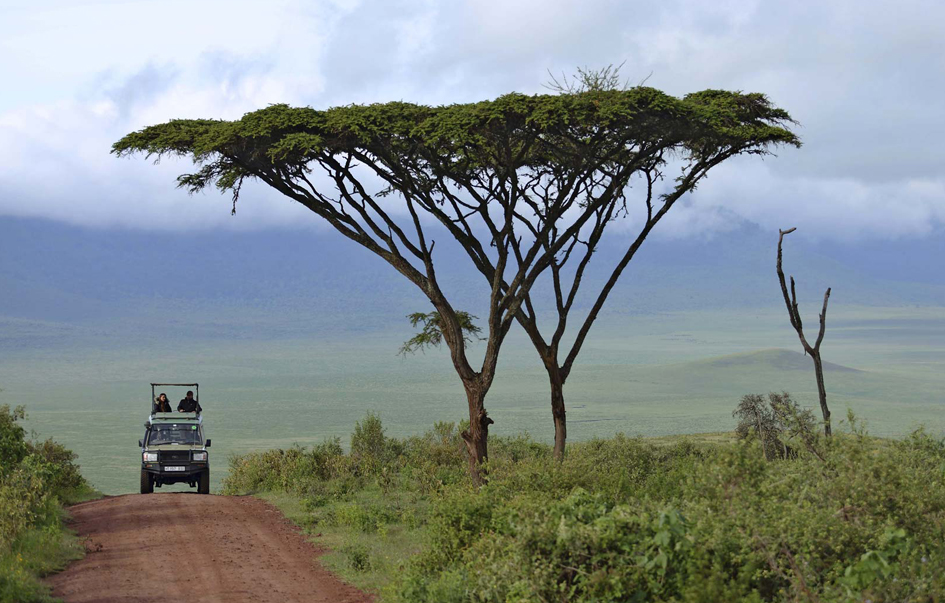Ngorongoro highlands
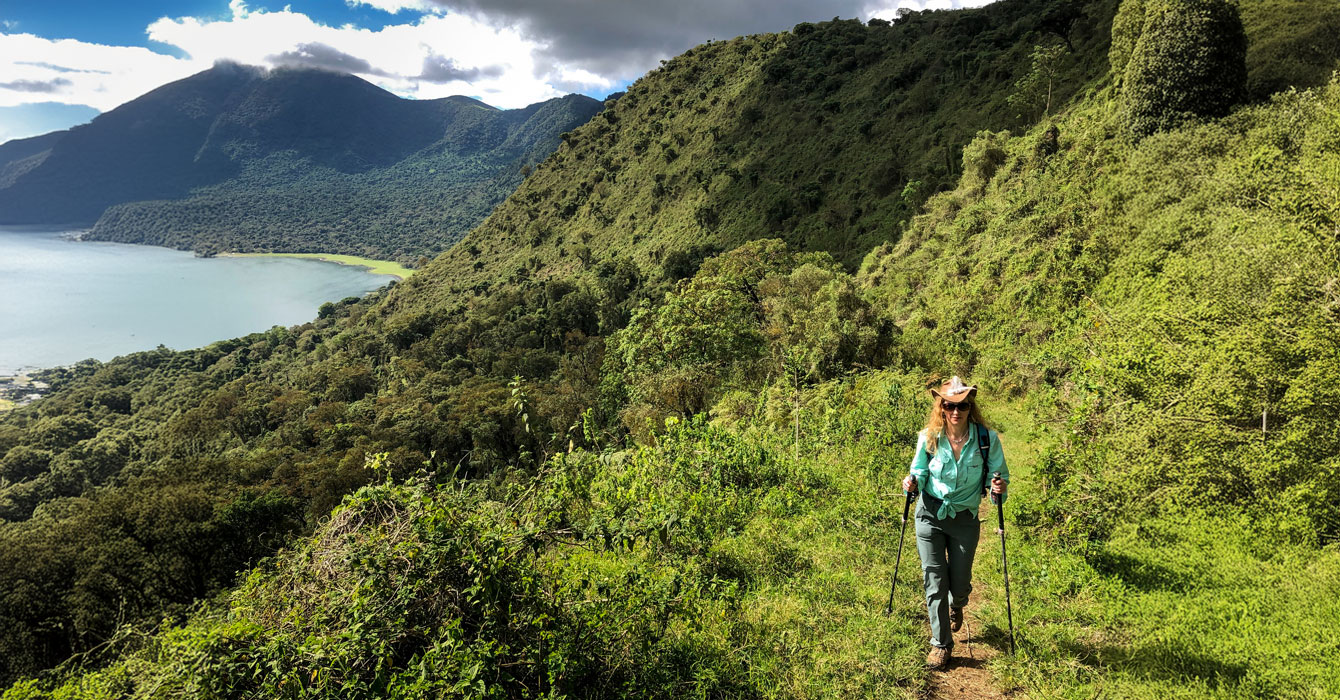
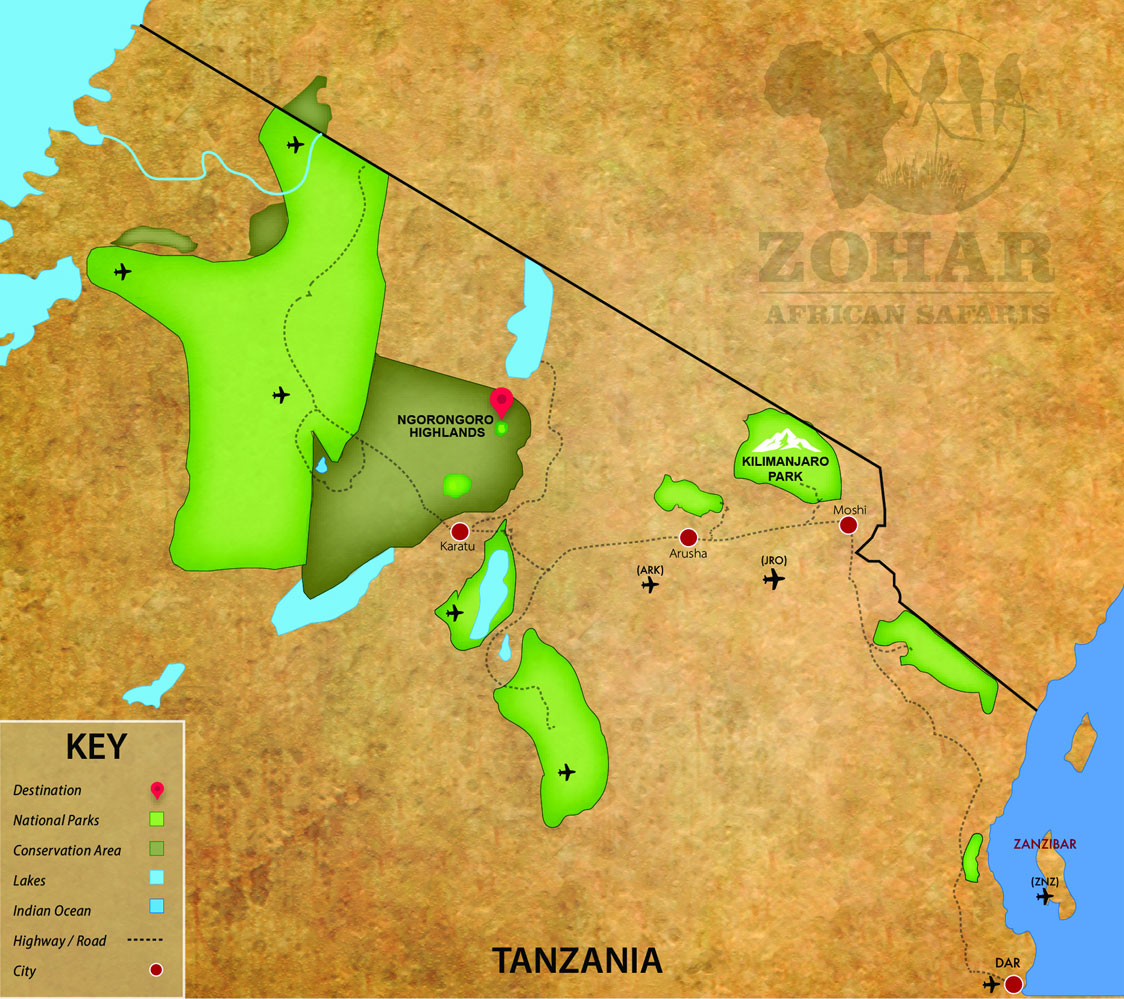
The Ngorongoro Highlands is a vast, breathtaking expanse of verdant grasslands, offering some of the best hiking and walking safari experiences in Tanzania.
Rising to an altitude of 10,130 feet (3,088 meters) above sea level, this lush, panoramic landscape is not only rich in natural beauty but also serves as the ancestral home of the Maasai people, whose traditional bomas (dome-shaped dwellings) are scattered across the highlands. Here, the Maasai graze their cattle among freely roaming wildlife, maintaining a centuries-old way of life in harmony with nature.
A cultural & historical sanctuary
When the Serengeti was designated a UNESCO World Heritage Site, many Maasai families relocated to the Ngorongoro Highlands, where they continue to uphold their traditions.
The village of Nainokanoka, located in the heart of the highlands, serves as a central gathering place where Maasai communities engage in trade, storytelling, and cultural exchanges. A visit to this authentic Maasai village offers a rare and immersive opportunity to experience their unique customs, traditional dress, and daily life firsthand.
For travelers seeking a deeper connection to Tanzania’s landscapes and heritage, the Ngorongoro Highlands provides an unforgettable blend of adventure, culture, and breathtaking scenery.
Features & Wildlife Species
Empakai Crater is a stunning geological feature situated within the Ngorongoro region. It is located approximately 2-hour drive from Ngorongoro entry gate.
The crater’s rim offers a breathtaking view of the active volcanic mountain, Oldonyo Lengai. The crater floor is home to a large number of seasonal flamingos, making it appear pink from a distance. Additionally, the walls of the crater are adorned with a diverse range of colorful flowers.
Trekking to the crater floor can be challenging, and it requires a certain level of fitness. The hike down to the floor takes approximately 45 minutes, while the hike back up takes around an hour. Armed guards always accompany hikers.
Olmoti is a sunken caldera that gets its name from the Maasai language, meaning “cooking pot”. To reach its rim, you can take a 45-minute footpath from the ranger post at Nainokanoka.
This shallow crater is covered in grass and is divided by a river valley. Although offering a different scenic view from the Ngorongoro or Empakai, it is still a beautiful place that provides good grazing to the local Maasai cattle and various antelope.
If you head to the main viewpoint, there’s a short footpath that leads to the seasonal Munge Waterfall, where you can see the river cascading out of the crater.
Empakai Crater is a stunning geological feature situated within the Ngorongoro region. It is located approximately 2-hour drive from Ngorongoro entry gate.
The crater’s rim offers a breathtaking view of the active volcanic mountain, Oldonyo Lengai. The crater floor is home to a large number of seasonal flamingos, making it appear pink from a distance. Additionally, the walls of the crater are adorned with a diverse range of colorful flowers.
Trekking to the crater floor can be challenging, and it requires a certain level of fitness. The hike down to the floor takes approximately 45 minutes, while the hike back up takes around an hour. Armed guards always accompany hikers.
Olmoti is a sunken caldera that gets its name from the Maasai language, meaning “cooking pot”. To reach its rim, you can take a 45-minute footpath from the ranger post at Nainokanoka.
This shallow crater is covered in grass and is divided by a river valley. Although offering a different scenic view from the Ngorongoro or Empakai, it is still a beautiful place that provides good grazing to the local Maasai cattle and various antelope.
If you head to the main viewpoint, there’s a short footpath that leads to the seasonal Munge Waterfall, where you can see the river cascading out of the crater.
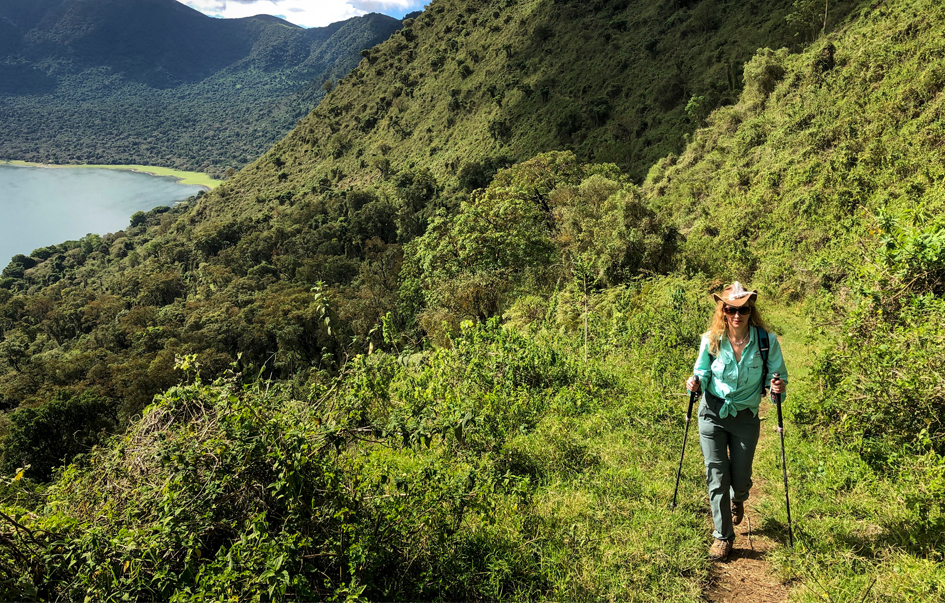
AREA ACTIVITIES
- Authentic Maasai cultural experience.
- Olmoti and Empakai Crater hikes.
- Walking and hiking safaris on the highlands.
- Camping on the rim of Empakai Crater and general camping safaris.
WHEN TO VISIT
Recommended times to visit Ngorongoro highlands are between June through October and between January and February, besides the short rainy season in November to December.
Explore more about it on best time for a safari in Tanzania.
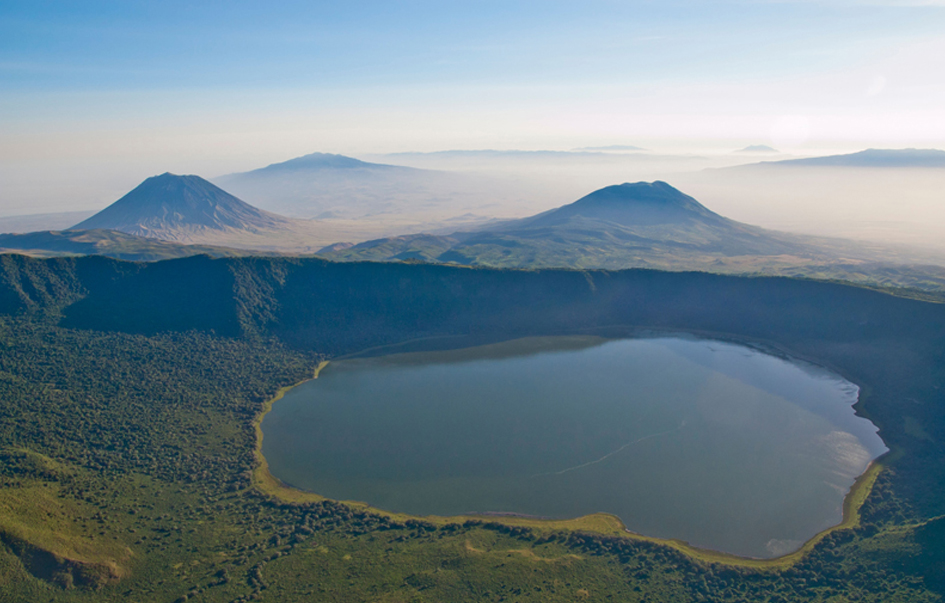
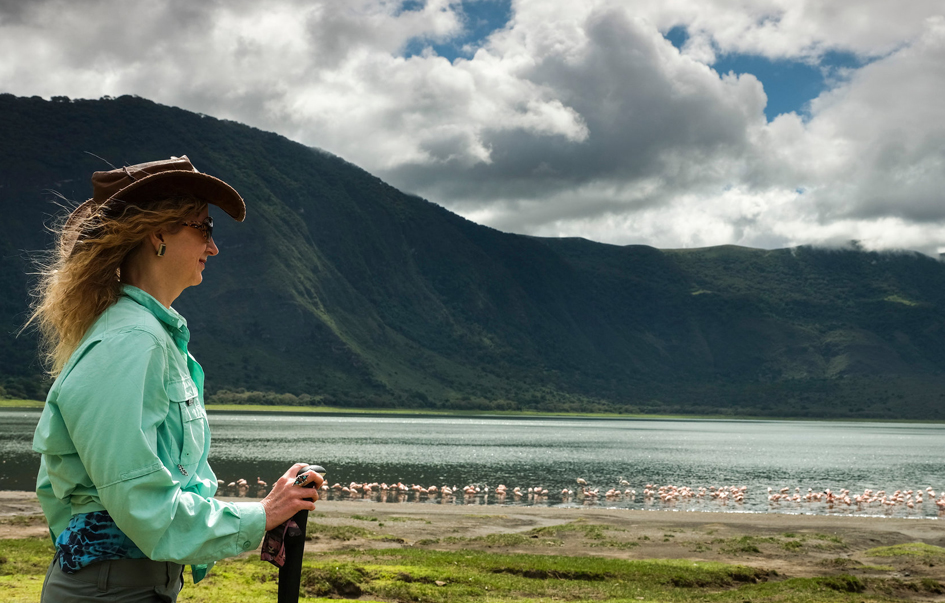
WHAT TO SEE
- Olmoti and Empakai craters.
- Soda Lake in Empakai Crater that supports seasonal flamingos and other birds on the Empakai crater floor.
- Scenic landscapes made of hills and small mountains.
- Hundreds and hundreds Maasai cattle grazing close to wildebeests, and zebras amongst others.
- Maasai bomas homes.
- Munge waterfall.
HOW TO GET THERE
By road: it’s about an hour drive from the Crater floor to Olmoti Crater. Empakai Crater is 30min further.
